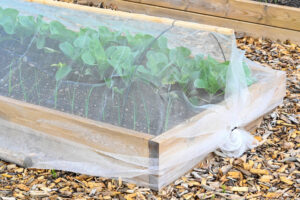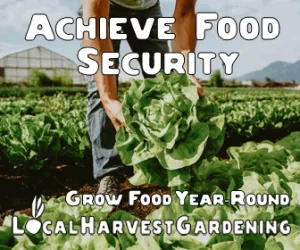Vegetable garden pest control requires vigilance and strategic intervention. Regular inspection detects early signs of infestation, enabling prompt and effective response. Techniques include hand-picking pests, introducing natural predators like ladybugs, and using organic pesticides. Crop rotation and diverse planting prevent pests by attracting beneficial organisms and deterring potential threats. A healthy soil ecosystem supports robust plant growth, inherently resistant to pests.
I. Introduction to Garden Pests
Every gardener faces the challenge of pests which can wreak havoc on a vegetable garden. Common culprits include insects like aphids, cutworms, and tomato hornworms, alongside larger creatures such as deer, rabbits, and rodents. These pests not only damage foliage and consume crops, but can also introduce diseases that affect plant health and diminish yields. Understanding the types of pests that commonly infest gardens and their potential impact is crucial for implementing effective control measures.
II. Effects of Pest Control on Edibility
Using chemical pesticides can be a double-edged sword in the fight against garden pests. On one hand, these chemicals are effective in mitigating the onslaught of pests; on the other, they can compromise the safety of your vegetables for consumption. Pesticide residues can remain on and in the produce, leading to potential health risks if ingested. This underlines the importance of a thorough understanding of pesticide labels, which detail critical information such as proper application methods and waiting periods—the time between pesticide application and when the produce can be safely consumed. Adhering to these guidelines ensures that efforts to protect your garden do not inadvertently harm your health.
III. Organic Pest Control Methods
Embracing organic pest control methods is a strategic approach to ensure both the health of the garden and the safety of its produce. Utilizing natural substances and biological controls minimizes the environmental footprint and reduces the risk of introducing harmful chemicals into the food chain. Benefits of organic methods include improved soil health, conservation of beneficial insect populations, and alignment with sustainable gardening practices.
Notable organic solutions include Neem oil, which acts as an all-purpose insect repellent, insecticidal soaps that break down quickly in the environment and target soft-bodied pests, and diatomaceous earth, a powdery substance that causes dehydration in insects without using toxins. Implementing these methods can be highly effective in maintaining a pest-free garden while upholding organic cultivation standards.
Neem Oil: To use Neem Oil, dilute it with water according to the instructions on the label and spray it directly onto plants. It is effective against a wide range of pests, including aphids, beetles, caterpillars, and mites.
Insecticidal Soaps: Insecticidal soaps are made from natural ingredients such as potassium salts of fatty acids and target soft-bodied insects like aphids, mealybugs and mites. To use, simply spray the solution on affected plants.
Diatomaceous Earth: Made from the fossilized remains of small aquatic organisms called diatoms, diatomaceous earth is a natural pesticide that damages the exoskeletons of insects causing them to dry out and die. It can be sprinkled around plants or mixed with water to create a spray.
Besides these organic solutions, there are cultural practices and physical barriers that can also help reduce pest infestations. These include crop rotation, companion planting, mulching, and row covers. Crop rotation involves changing the location of crops each season to disrupt pest life cycles and reduce the buildup of pests in the soil. Companion planting promotes natural pest control by attracting beneficial insects that prey on pests. For example, marigolds planted alongside vegetables can deter aphids while attracting ladybugs which feed on them. Mulching helps prevent weeds and creates a barrier between the soil and pests. Row covers, such as mesh or fabric covers, physically block insects from reaching plants without using chemicals.
Organic pest control methods not only protect our environment but also promote the health of our gardens by maintaining a natural balance between pests and beneficial organisms. They are safe for humans, pets, and wildlife, making them a sustainable choice for pest management. Additionally, these methods do not harm beneficial insects such as pollinators and natural predators of pests. This ensures that the ecosystem remains in balance and helps maintain healthy plant growth.
IV. Cultivating Pest-Resistant Garden Varieties
One of the most effective strategies for organic pest management is the cultivation of pest-resistant plant varieties. Selective breeding has been practiced for generations, resulting in crops that can resist or tolerate pest attacks, ensuring yield stability and quality. By fostering traits that make plants less appealing or inaccessible to pests, these varietals naturally discourage infestations.
Beyond individual plant resistance, biodiversity in a garden plays a crucial role in maintaining ecological balance and reducing the prevalence of pests. A diverse ecosystem is robust; by introducing a variety of plants, gardeners encourage a complex web of interactions that support a multitude of beneficial organisms. These include natural predators to pests, pollinators for plant reproduction, and microorganisms that contribute to soil health. Biodiversity makes it more difficult for pests to find and decimate specific crops, as the varied flora can interrupt their lifecycle or provide competition for resources.
Gardeners can also use intercropping, which involves growing multiple crops in close proximity, to deter pests. For example, planting aromatic herbs like basil and lavender alongside vegetables can confuse and repel insects with their strong scent.
V. Physical Pest Control Techniques
Physical pest control methods utilize barriers, traps, and manual removal to protect garden plants without the use of chemicals. Barriers such as garden netting or row covers prevent pests from reaching the plants, effectively thwarting their ability to feed and reproduce. Traps can be used to lure and capture pests, using visual attractants, pheromones, or food as bait. On a smaller scale, gardeners can manually remove pests from plants, which, while labor-intensive, can be particularly effective for large pests like slugs or caterpillars.
However, these physical methods also have limitations. Barriers may restrict necessary pollinators from accessing the plants, and traps often require regular maintenance to remain effective. Manual removal may not be feasible for large gardens or with small, elusive pests. In addition, environmental factors like wind and rain can compromise the effectiveness of physical barriers. Despite these challenges, physical pest control remains a cornerstone of sustainable gardening practices, and when implemented correctly, it can significantly reduce pest populations with minimal impact on the environment.
VI. Biological Pest Control and its Safe Application
Biological pest control involves the introduction of natural predators and parasites that target and eliminate pests, thus ensuring balance in the garden ecosystem. Beneficial insects such as ladybugs, lacewings, and parasitic wasps can be introduced to the garden as biological control agents. These insects feed on aphids, mites, and other harmful pests, providing a natural means to manage pest populations without resorting to chemical insecticides. Gardeners must take care to select the appropriate beneficial insects for the specific pests they wish to control and ensure that these natural predators have a sustainable environment with shelter and alternative food sources. By maintaining a diverse and balanced garden ecosystem, the need for intervention is minimized as the natural biological controls work to keep pest populations in check.
VII. Safe Use of Chemical Pesticides
While chemical pesticides can be effective, it’s important to identify and use the least-toxic options to ensure the safety of edible plants. Products containing neem oil, insecticidal soaps, and horticultural oils are preferable as they target pests with fewer adverse effects on beneficial insects and the environment. Brands such as Safer® Brand and Bonide® offer a range of products specifically crafted for use on edible gardens. Moreover, neem oil, derived from the neem tree, not only acts as a natural pesticide but also offers fungicidal properties, making it a dual-purpose product. Always read and follow label instructions to maximize efficacy and safety.
When applying chemical pesticides to an edible garden, it is crucial to adhere to a few application tips to minimize their impact on the edibility of the vegetables. Firstly, apply pesticides in the early morning or late evening when pollinators are less active to prevent harming beneficial insects. Secondly, use spot treatments on infested areas rather than blanket applications to limit pesticide exposure. Thirdly, it’s essential to observe pre-harvest intervals — the waiting period between pesticide application and when crops can be safely harvested — as specified on the product label. Additionally, thorough washing of the vegetables before consumption is imperative to remove any pesticide residue. Following these guidelines will help ensure that the produce from your garden is safe to eat and that your garden remains a sanctuary for beneficial wildlife.
VIII. Integrated Pest Management (IPM)
Integrated Pest Management (IPM) is a holistic approach that combines multiple strategies to manage garden pests in the most environmentally sensitive way. This method includes cultural, mechanical, biological, and chemical tactics to create a robust defense against unwanted insects and diseases. By implementing a variety of techniques, such as cultivating pest-resistant plant varieties, encouraging natural predators, and using traps or barriers, gardeners can reduce the reliance on chemical pesticides. IPM emphasizes regular monitoring of the garden to detect pest issues early and respond promptly, thus ensuring that interventions are not only effective but also minimally invasive. The ultimate goal of IPM is to maintain a healthy balance within the ecosystem where pests are managed to acceptable levels rather than completely eradicated, promoting biodiversity and sustainability.
IX. Monitoring and Decision-Making in Sustainable Gardening
Key to the success of Integrated Pest Management (IPM) is the monitoring and decision-making process which involves regular, systematic observation of the garden ecosystem. Careful inspection of plants, identification of pests and beneficial organisms, and an understanding of their life cycles are crucial. Effective decision-making requires setting action thresholds—levels of pest population or environmental conditions at which active pest control must be initiated to prevent unacceptable damage or loss. This approach minimizes unnecessary interventions and focuses on long-term prevention of pests or their damage through a combination of techniques such as habitat manipulation, modification of cultural practices, and the use of resistant varieties. By continuously analyzing the impact of different pest control actions on the garden, gardeners can adapt their management strategies, ensuring sustainability and resilience of the garden ecosystem.
X. Conclusion
In conclusion, the significance of safeguarding the edibility and safety of garden produce cannot be overstated. Informed pest control practices, such as those articulated within the Integrated Pest Management framework, are not only vital for producing healthy, toxin-free fruits and vegetables but also critical for the well-being of consumers and the environment. By adopting strategies that prioritize natural and preventative measures over chemical interventions, gardeners contribute to a food system that is both safe and sustainable, ensuring that the nourishment we derive from our gardens is devoid of harmful residues and the natural balance of our ecosystems is preserved for future generations.


